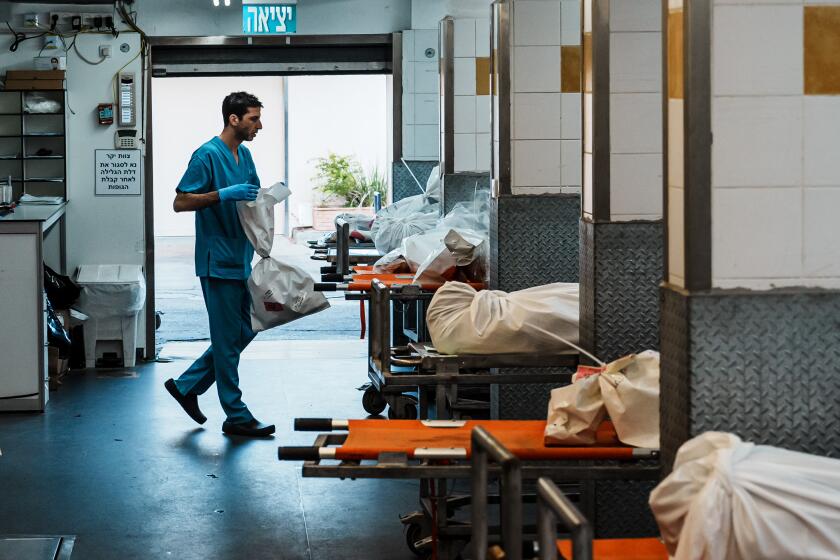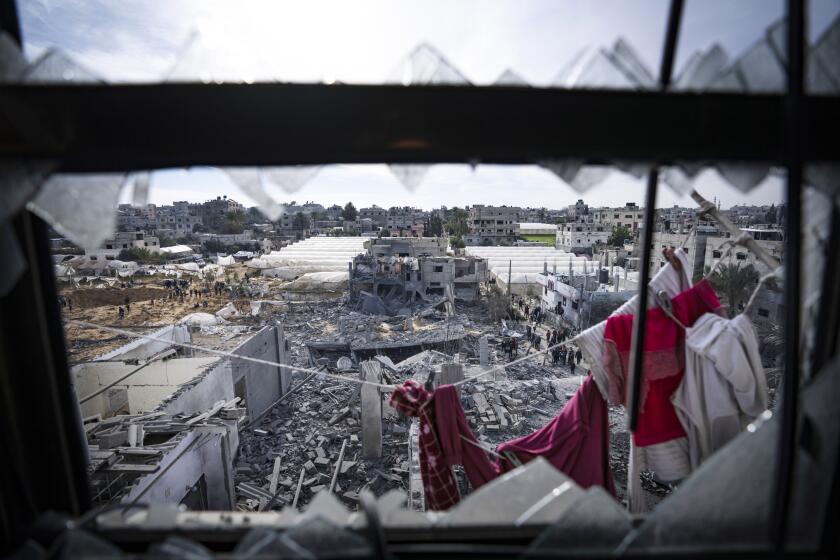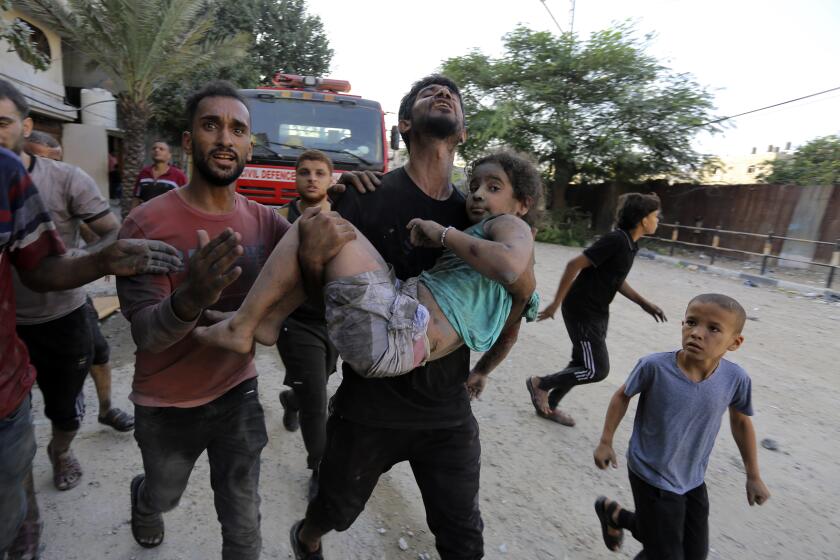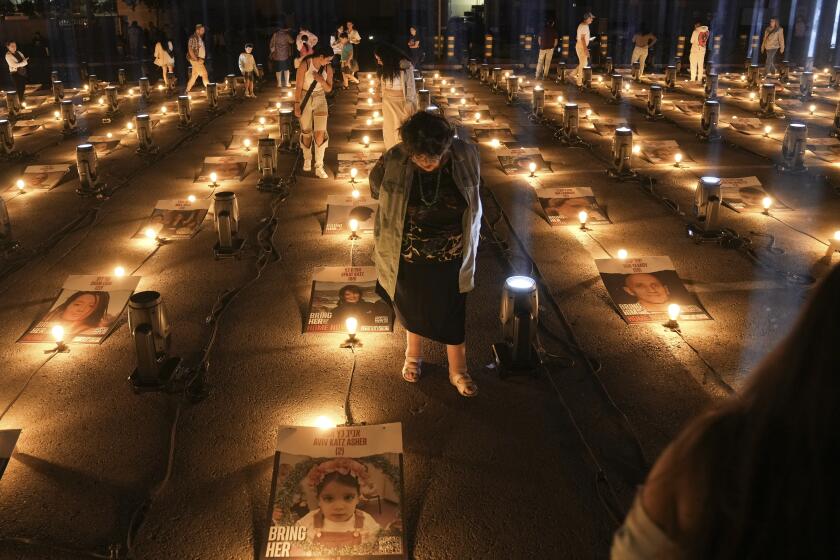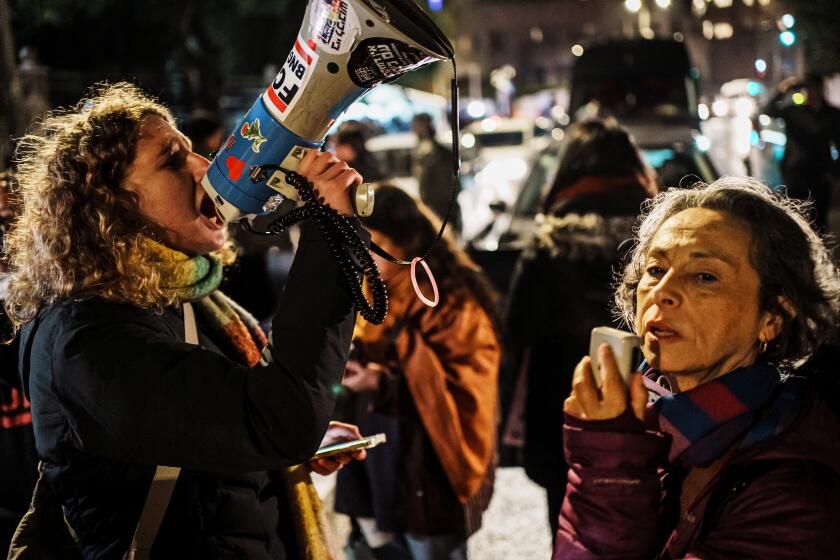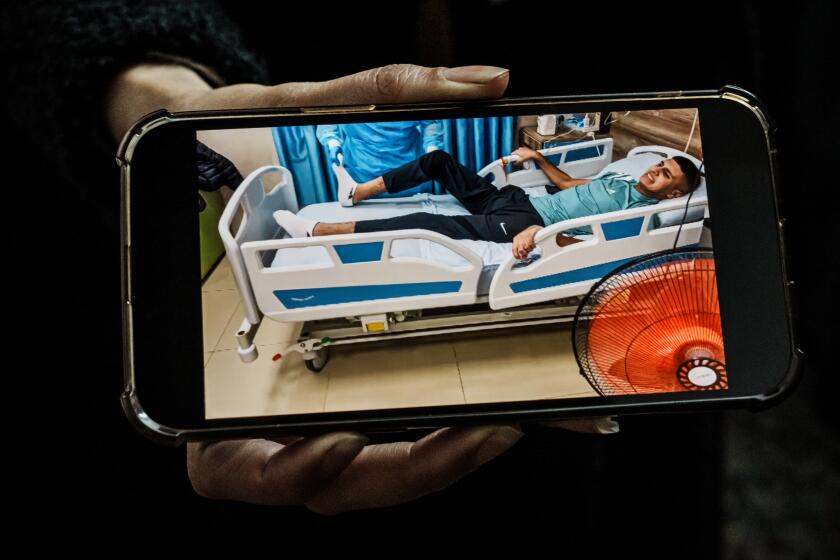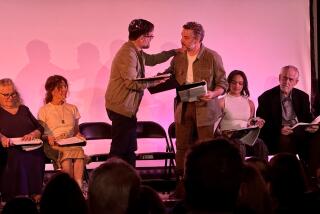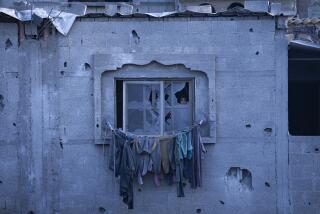Southern Israel was filled with blood and death. Red wildflowers bloom among the ashes
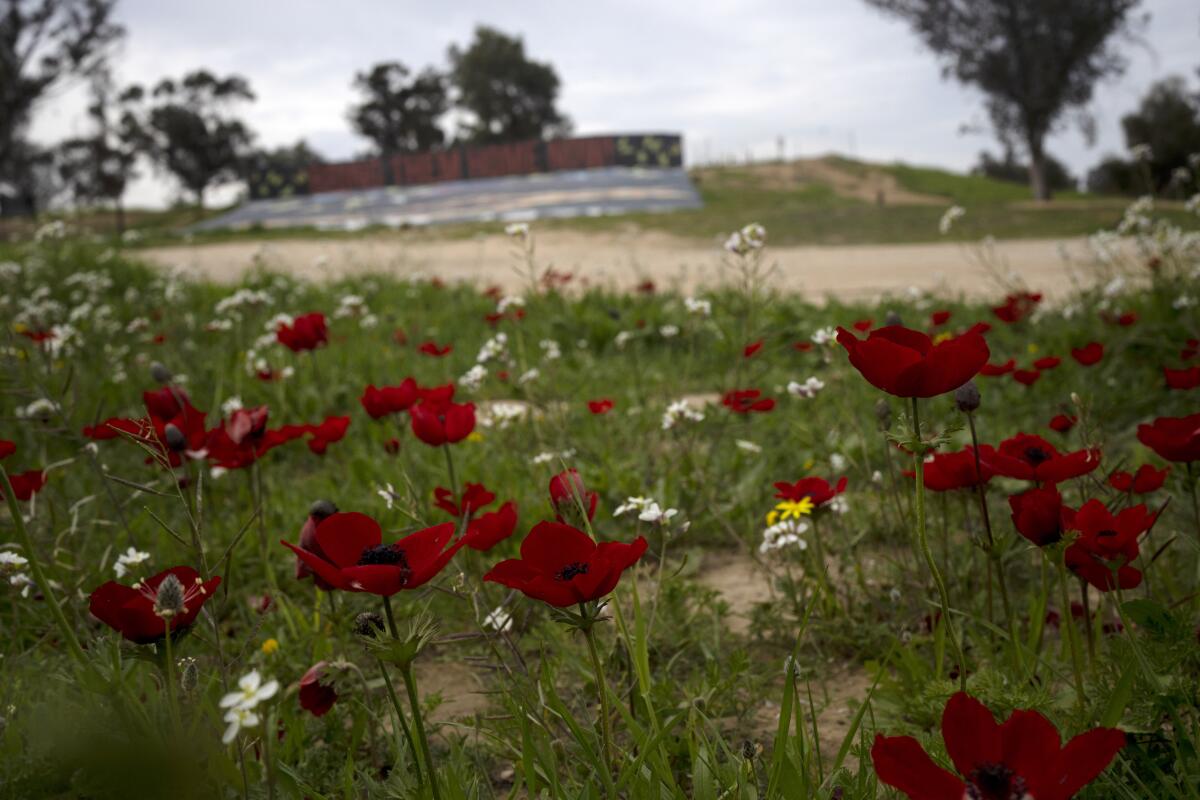
- Share via
REIM, Israel — Each year as spring approaches, wildflowers erupt across Israel — a splash of color before the punishing Middle Eastern summer. Nowhere is the show more dramatic than in southern Israel, near Gaza, where brilliant anemones burst forth with such intensity that rolling hills seem to be covered in red carpets.
Along the Gaza border, the flowers, which look like poppies, spawned a festival, Darom Adom, or Scarlet South. It’s been a major economic engine and source of local pride for nearly two decades, bringing hundreds of thousands to a little-visited and conflict-scarred part of Israel.
This year, even as explosions ring out and tanks churn across the fields while the war in Gaza drags into its fifth month, the flowers have burst forth with intensity. But the festival has been canceled.
For organizer Vered Libstein, everything is different.
Libstein lived in Kfar Azza, a kibbutz on the Gaza border that was hit hard by the Oct. 7 Hamas attack that started the war. She lost her husband, Ofir Libstein; her son Nitzan, 19; her mother, Bilha Epstein; and her nephew, Netta Epstein.
Teenage friends Angelina, who is Palestinian, and Adar, who is Jewish Israeli, talk about the Hamas attacks on Israel and Israel’s war on Gaza. ‘It’s OK to disagree.’
Ofir Libstein was on the kibbutz’s local security team and was one of the first confirmed deaths Oct. 7. It took 12 days to find Nitzan’s body.
Seeing the dramatic red blooms return after so much loss pierces her heart, Libstein said as she walked through a field.
“On one side it’s hard, but on the other side, it just proves to us that life is stronger than everything, and it renews itself, and we’ll need to find the strength to renew ourselves as well,” she said.
Hamas killed about 1,200 people and kidnapped around 250 during the Oct. 7 attack. Israel responded by launching one of the deadliest and most destructive air-and-ground offensives in recent history. More than 28,500 Palestinians have been killed, mostly women and children, according to Gaza’s Health Ministry, which does not distinguish between civilians and combatants in its count. The United Nations has said 1 in 4 Gazans are starving because of the war.
A forensic investigator in Tel Aviv works to reassemble remains of victims of Hamas militants, trying to understand the causes of death and the underlying cruelty.
Gazans crammed into Rafah along the Egyptian border have no place to escape as Israeli attacks hit ever closer in a final bid to rescue remaining hostages.
Libstein founded the Darom Adom festival with her husband 19 years ago, around the time militants in Gaza started launching frequent rockets into Israel. The flowers were a way to build pride and attract visitors.
The blooms are a symbol of resilience for Palestinians as well. Their artwork features the red flowers, whose black-and-white center and green leaves are the colors of the Palestinian flag.
In 2013, an Israeli conservation group ran a popular vote that named the red anemone Israel’s national flower.
The Darom Adom festival started as a volunteer hotline helping hikers find areas with the most concentrated blooms. It quickly grew, spawning a tourism company and becoming one of Israel’s largest nature events, Libstein said.
Civilian deaths in Gaza have fueled global outrage. But many Israelis, still raw from Hamas’ Oct. 7 attack, have scant interest in the war’s toll on Palestinians.
Festival activities are typically spread over four weeks in January and February, when the blooms are at their peak. In recent years, Darom Adom has drawn more than 400,000 visitors and accounted for more than 80% of annual local tourism income, according to the financial paper Globes.
Anemones grow across Israel in white, purple and pink, but in the south, they bloom only in bright scarlet. The festival’s name is also a nod to the “red alert” sirens that warn of incoming rockets.
Although this year’s festival was canceled, local businesses and artisans have organized pop-up markets where Israelis can order anemone bulbs to grow at home — though some are still making the trek south.
“It’s really beautiful to see this blooming, because when we came here, everything was totally burned,” said Moshe Federman, who spent three months as a reserve soldier at the nearby site of the music festival where 364 people were killed Oct. 7.
Weeks after Hamas militants paraded her nearly naked body, young Israeli festival-goer Shani Louk is confirmed dead. Many families still await news of their loved ones.
While charred remains of trees still dot the landscape, riots of red flowers peak out from between the slender trunks of eucalyptus saplings. A few weeks ago, relatives of those killed at the music festival planted saplings on the Jewish holiday honoring trees.
A memorial at the music festival site has photos of the victims arranged on stands in a semi-circle around a stage, as if they were dancing together. It has become a pilgrimage site for visitors to grapple with the aftermath of the bloodiest day in Israel’s history.
Federman said it was strange to be back as a civilian with his wife, seeing the newly planted trees and wildflowers. He paused next to a tree in honor of a victim he knew.
“It’s growing anew. I guess that’s part of life,” he said.
As Anat Katz — a New Yorker visiting her daughter, who lives in Tel Aviv — walked around the memorial, she said the flowers were beautiful, but their red blooms felt too bright, reminding her of blood and death.
“The flower is pulling at our strings both ways, the beauty and the conflict of it,” she said. “We see them popping up everywhere we go, so that feels a little hopeful in a place that feels like a real hit in the stomach. There’s something that feels cyclical, how they’re alive right now, how they’re blooming at a time when it doesn’t feel like there’s a lot of blossoming.”
More than three months into the Israel-Hamas war, the families of hostages held in Gaza have grown disillusioned with Israel’s military operations.
Libstein, who has been visiting the south sporadically, is living with much of the Kfar Azza community in a hotel north of Tel Aviv. She is helping oversee their move into mobile homes on a kibbutz about 12 miles east of Kfar Azza, while their houses, many of which were badly damaged in the attack, are rebuilt.
Experts say Israel’s deadly raid on a West Bank hospital may have violated international laws, including a ban on combatants posing as doctors or civilians.
It’s strange to be among the flowers she and her husband helped turn into a symbol of the region, without him and away from the home she loves during the most beautiful time of year.
The yellow dandelions blooming among the anemones remind her of the 134 hostages believed still held in Gaza, she said. Yellow ribbons have emerged as a symbol of the protests demanding their release.
Libstein said even though nature is marking the passage of time, it’s impossible to move on while members of her community are held captive.
“It’s a symbol to us about the importance of blooming again, but it will take a long time,” she said.
More to Read
Sign up for Essential California
The most important California stories and recommendations in your inbox every morning.
You may occasionally receive promotional content from the Los Angeles Times.

